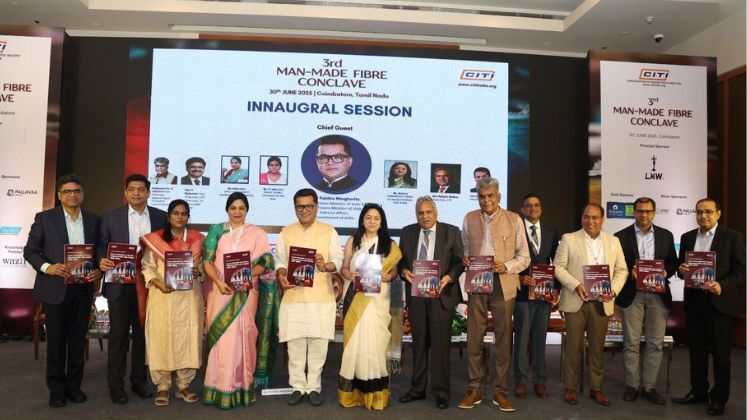
Union Minister of State for Textiles and External Affairs, Pabitra Margherita, highlighted the vital role played by man-made fibres (MMF) in driving India towards its ambitious target of reaching US $ 100 billion in textile and apparel exports by 2030. Addressing the inauguration of the 3rd Man-Made Fibre Conclave in Coimbatore, Margherita emphasised the strategic significance of MMF in keeping pace with the trends in global demand and enhancing India’s competitiveness in the world.
The conclave, organised by the Confederation of Indian Textile Industry (CITI), was themed Global Trade Dynamics: Strengthening India’s Position in the Manmade Fibre Value Chain. The shift towards the global demand of MMF was highlighted by Margherita in his keynote speech and reiterated the Indian Government’s policy focus on encouraging this transition through initiatives like the PM-MITRA parks and the Production Linked Incentive (PLI) scheme—both of which have the objective of upgradation of infrastructure and investment in the textile value chain.
Later in the day, while talking to Tirupur exporters, the Minister hailed the city’s central position in India’s apparel value chain as ‘the centre of everything’ of the garment export business in the country. He noted the suggestions offered by local exporters and promised them that their suggestions would be taken up with concerned departments after due consideration.
Emphasising trade talks in progress, Margherita stated that India is taking efforts to complete Free Trade Agreements (FTAs) with the United States, UAE, and other countries—markets with high demand for Indian clothing. He further said that benign domestic conditions and growing global opportunities offer a unique window for Indian textiles.
The minister also visited the Sardar Vallabhbhai Patel International School of Textiles and Management (SVPISTM), an autonomous organisation under the Ministry of Textiles. He spoke to the students and staff, emphasising the industry’s importance, pointing out that textiles account for 13% of India’s industrial production and are the second-largest source of employment in the nation after agriculture.






